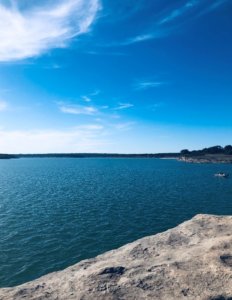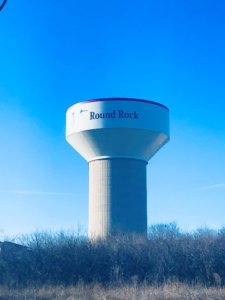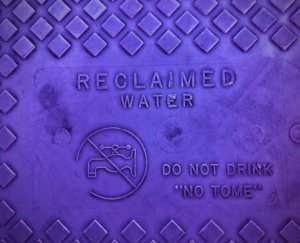The story of our city’s water
It’s very important to know where our water comes from and the process it goes through to fully understand and appreciate it. I believe the most important part of  water conservation is the education of our community. If each person is more aware and informed about our water source, they might be more inclined to save it!
water conservation is the education of our community. If each person is more aware and informed about our water source, they might be more inclined to save it!
Our water mostly comes from Lake Georgetown which gets supplemented from Lake Stillhouse Hollow, near Belton via a 28-mile pipeline, and some from the Edwards Aquifer.
Lake Georgetown only gets recharged from storm water runoff and is effected by evaporation quite often. Lake Georgetown’s water level decreases frequently and fast (especially summer) which is our highest water consumption season. According to the City of Round Rock’s Water Production Report for August 2019 (Last summer), the average daily water consumption from surface water was about 30 million gallons of water!
Drought and water use go hand in hand
Water consumption is highest in the summer due to the watering of lawns, gardens, and pools. The lack of rain causes plants to dry up and die so watering increases to prevent that. Did you know that traditional irrigation uses potable water to irrigate lawns? Yes, that’s right. We water our grass with DRINKING WATER! August 2019 had a total average of 0.01 inches of rain. High water usage and lack of rain can be a dangerous combination because our water resources are being depleted faster than they are being replenished. This is a threat of water scarcity! As our population continues to grow, so does water consumption. Our city planners realized that they had to plan for more water usage and find ways to save water. About 20 years ago, the City of Round Rock implemented one of the most important water saving technologies to a special part of town. The Water Reuse program was created as an effort to reduce the City’s peak potable water use during the high use months.
Potable: Safe to drink; drinkable.
Reuse, Reclaimed, Recycled water: treated wastewater that is safe and suitable for a purpose. Reuse may include irrigation of gardens and agricultural fields or replenishing surface water and groundwater.
Benefits
- This helps with the City’s conservation efforts, by increasing the amount of potable (drinking) water that we have available.
- This water is at a lower cost than the treated drinking water that is traditionally used to water landscapes.
- Recycling water uses less energy than treating and distributing potable water.
- Helps meet the domestic, industrial and environmental water demands that are increasing daily.

The recycled water is only available in certain areas of town (on the east side of I-35), close to where the recycled water line is in the ground. These areas include the Higher Education Center, Austin Community College, other parks and schools in the northeast part of the city, and subdivisions including Forest Creek HOA, Forest Creek Golf Course, the Freeman Tract, Legends Village HOA, and the Vizcaya development. The City also has a reuse water fill station at Old Settlers Park. This water is available FREE of charge to customers for commercial irrigation, development, or construction use only.
Is it safe?
I completely understand if people are concerned that lawns are being watered with recycled wastewater. According to a publication from the Reuse Water Foundation, “Disinfected tertiary-treated recycled water is virtually free from all pathogens, including viruses. Several long-term microbiological studies involving thousands of samples have confirmed that pathogens are reduced to non-detectable or insignificant levels in tertiary-treated recycled water.” So even though its water that has been used before, it’s still safe!
 Look out for purple!
Look out for purple!
Purple indicates reclaimed non potable water. You will be able to see purple colored sprinkler heads, valve boxes, and even a purple stripe at the top of our reuse water tower. Most states require pipes to be colored purple when they carry reuse water. This bright color is also great for public education! Curious people may like to know why some pipes are colored purple.
I am happy to know that this city is trying to conserve our most important natural resources. It shouldn’t only be the city’s responsibility. You can find other ways to help conserve water in those hot summer months. There are many water saving tips on the Water Spot Blog!


